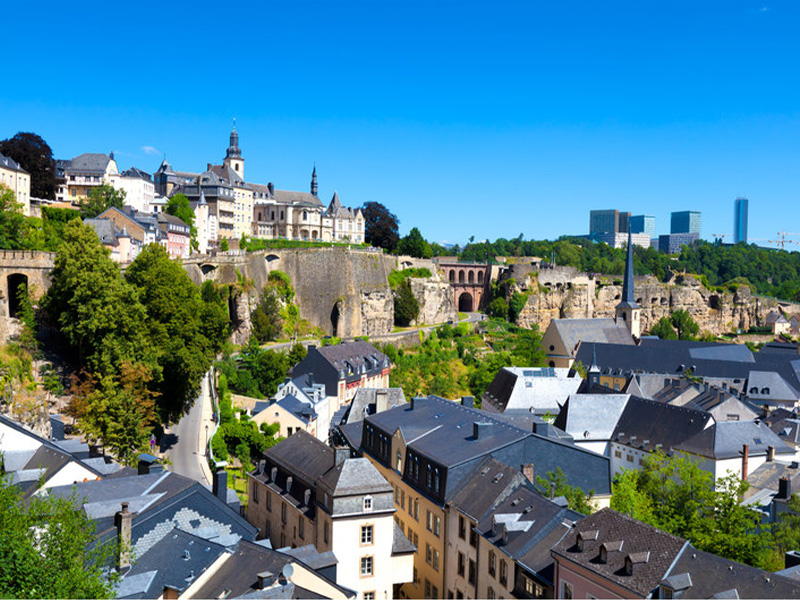
Luxembourg: Desperately seeking buildable areas
5 февраля 2020 г.
Will Luxembourg soon be faced with an unprecedented housing crisis? The Grand Duchy is having difficulty finding land to build new dwellings since the population doesn’t stop growing. However, it is not land that is lacking in the country, so the State is counting on being able to make things move forward, especially by fighting speculation.
A lack of buildable land and an increase in dwelling prices are closely related
Real estate prices increase significantly each year, so much so that the selling price of a habitable square meter in the city of Luxembourg has gone from €4,000 to €7,000 in fewer than 10 years. Of course, the country is small and includes almost 30% in natural areas, but buildable lands still do exist. The problem is that a large majority of them have neither been built on nor are they for sale. It is incidentally estimated that the unbuilt buildable area is more than 2,700 hectares.
Luxembourg could simply boast that it is one of the rare countries where, despite the high prices of real estate, apartments find buyers quickly, sometimes even before they are placed on the market, since word of mouth is mostly sufficient to find a purchaser. The demand is so strong that negotiations are rare, resulting in a constant increase in prices.
Speculation or protection?
If speculation induces a certain number of owners to hold onto their land, one cannot deny that a part of the population which owns land refuses to sell it out of fear of the future. To sell is to take the risk of paying a lot more for a similar asset a few years later. What to do to make owners who would prefer to keep their land with the prospect of leaving it to their children think about this?
It’s true, one can never know what tomorrow will bring, especially in a country where, despite the fact that an unskilled worker’s gross salary ranges from 2,507.70 euros to 2,089.75 euros, managing the end of the month is proving to be more and more complicated. Moreover, dwelling is one of the factors that aggravate the risk of poverty. In 2017, the cost of lodging made the poverty rate go from 15.8% to 24%. This risk no longer only affects the social categories considered to be at risk, but now extends to practically every bracket of the population.
The State alone cannot respond to dwelling needs
The owner of only 11% of buildable lands, the State alone cannot eliminate the problem of a lack of affordable dwellings in Luxembourg. With a population in constant evolution, a little more than 614,000 on January 1, 2019, the country finds itself in a delicate situation from which public authorities are having difficulty extricating themselves.
The decision has been made to considerably increase the number of dwellings by 2026. Between 400 and 600 new moderate rent dwellings will be built by the State in the capital, providing housing for 1,400 persons. Furthermore, according to First Alderman Serge Wilmes, in the years to come the city envisions increasing construction on lands purchased recently by the city of Luxembourg.
What is the solution to free buildable lands?
Whether incentive-based or persuasive, several provisions have been taken by the State to encourage owners – private individuals or legal entities – to sell their land.
First of all, we note the implementation of tax benefits for owners who realize a capital gain on the sale of a parcel of land they have owned for more than two years. The only condition is that the income from the transaction had to have been paid between July 1, 2016 and December 31, 2018. The tax rate on the profit received would then be a maximum of 10.5% for the sale of built-on or unbuilt land, compared to 42% previously. Since 2017, the results have been tangible, with an observed increase of 9% of properties placed for sale. Notably, since January 1, 2019, the maximum tax on profits has increased back to 21%.
Finally, the bill on the “Baulandverträge” is being studied. The idea would be to establish green zones in buildable areas for a limited time period. The owners of these lands who have not built within the timeframe imposed by the law — we’re speaking of 4 to 6 years — would then see their lands requalified as green areas, a decision which would make the asset lose up to 95% of its value.
So, should one sell one’s lands or not? While some advocate taxation of profits to avoid a shortfall in dwellings, others question the absence of areas dedicated to the habitat, a solution which would increase the offering of dwellings and which one finds in all the large cities of the world. Might building vertically be the solution?